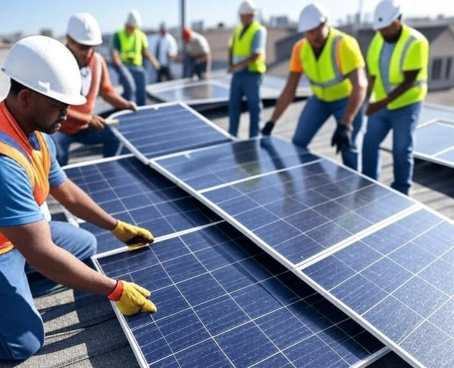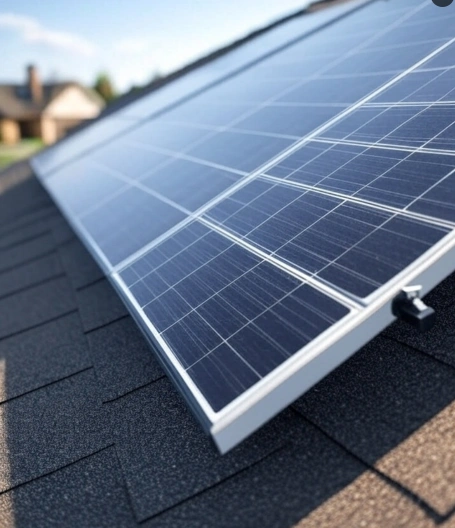
Choosing the right size portable power station is crucial to ensure it meets your power needs without being too bulky or expensive. The "size" of a portable power station typically refers to its capacity (measured in watt-hours, Wh) and power output (measured in watts, W). This article will guide you through the key factors to consider when determining the appropriate size for your portable power station, whether for camping, emergencies, or off-grid use.
Portable power stations are defined by two main specifications:
Capacity (Watt-Hours, Wh): This indicates how much energy the power station can store. For example, a 500Wh power station can theoretically power a 50W device for 10 hours (500 ÷ 50 = 10).
Output Power (Watts, W): This determines the maximum power the station can deliver at once. A 500W power station can run devices that collectively draw up to 500W without overloading.
The right size depends on what devices you need to power, how long you need to power them, and how portable the station must be.
Step 1: Identify Your Power Needs
To choose the right size, start by listing the devices you plan to use and their power requirements. Check the wattage (W) of each device, typically found on the device’s label, manual, or charger. For example:
Smartphone: 10–20W
Laptop: 30–100W
LED light: 5–20W
Mini fridge: 50–100W
CPAP machine: 30–60W
Small TV: 50–150W
Drone battery charger: 50–100W
Also, note how long you need to run each device (in hours). Multiply the wattage by the hours of use to calculate the watt-hours (Wh) needed. For example:
A 50W laptop used for 4 hours = 50 × 4 = 200Wh.
A 10W phone charger used for 2 hours = 10 × 2 = 20Wh.
Add up the watt-hours for all devices to estimate the total capacity required. Then, check the combined wattage to ensure the power station’s output can handle all devices running simultaneously.
Step 2: Account for Efficiency and Surge Power
Efficiency Losses: Power stations lose some energy during operation (typically 10–20% due to inverter inefficiency or heat). To account for this, multiply your total watt-hour needs by 1.2 (e.g., 200Wh × 1.2 = 240Wh) to ensure sufficient capacity.
Surge Power: Some devices, like fridges or power tools, require a brief surge of power to start (called peak or surge watts). Ensure the power station’s surge rating (often higher than its continuous output) can handle these demands. For example, a 500W power station might support a 1,000W surge.
Step 3: Match to Common Use Cases
Here are typical power station sizes and their applications:
Small (100–300Wh, 100–300W): Ideal for charging phones, tablets, cameras, or small lights during short trips or daily use. Suitable for solo travelers or minimal setups.
Example: Powering a 20W phone charger (40Wh/day) and a 30W laptop (90Wh/day) for one day requires ~150Wh.
Medium (300–700Wh, 300–700W): Great for weekend camping, RV trips, or small emergency setups. Can power laptops, LED lights, small fans, or a CPAP machine for a night.
Example: Running a 50W CPAP machine for 8 hours (400Wh) and charging a 20W phone (20Wh) requires ~500Wh.
Large (700–1,500Wh, 700–1,500W): Suitable for extended off-grid use, larger appliances (e.g., mini fridges), or home backup during outages. Good for families or groups.
Example: Powering a 100W mini fridge for 10 hours (1,000Wh) and a 50W laptop for 4 hours (200Wh) requires ~1,400Wh.
Extra-Large (1,500Wh+, 1,500W+): Designed for heavy-duty use, such as running power tools, multiple appliances, or extended off-grid living. Often paired with solar panels.
Example: Powering a 200W TV for 5 hours (1,000Wh), a 100W fridge for 12 hours (1,200Wh), and multiple small devices requires ~2,500Wh.
Step 4: Consider Charging Methods
The size of your power station also affects how it’s recharged:
Wall Charging: Larger capacity stations take longer to recharge (e.g., a 1,000Wh station may take 8–12 hours via a wall outlet).
Solar Charging: If using solar panels, ensure the power station supports your panel’s wattage. Larger stations require higher-wattage panels (e.g., 200W panels for a 1,000Wh station) to charge efficiently.
Car Charging: Smaller stations charge faster via a car’s 12V outlet, while larger ones may need extended driving time.
Step 5: Balance Portability and Weight
Larger capacity power stations are heavier and bulkier:
100–300Wh: 2–5 lbs, easy to carry in a backpack.
300–700Wh: 5–15 lbs, portable with a handle but less convenient.
700Wh+: 15–50 lbs, better suited for car transport or stationary use.
Choose a size that balances your power needs with how easily you can transport it. For example, a hiker may prefer a 200Wh station, while a camper with a vehicle can opt for a 1,000Wh model.
Step 6: Evaluate Additional Features
When selecting a power station size, consider:
Ports: Ensure enough AC, USB, or DC ports for your devices. For example, a 500Wh station with only one AC outlet may not suffice if you need to power multiple AC devices.
Output Type: Some devices require pure sine wave inverters (common in higher-quality stations) for safe operation, especially medical equipment or sensitive electronics.
Expandability: Larger stations often support expandable batteries or daisy-chained solar panels for extended use.
Suppose you’re camping for two days and need to power:
A 50W laptop for 4 hours/day (50 × 4 × 2 = 400Wh).
A 10W phone charger for 2 hours/day (10 × 2 × 2 = 40Wh).
A 20W LED light for 5 hours/day (20 × 5 × 2 = 200Wh).
Total: 400 + 40 + 200 = 640Wh. Add 20% for efficiency losses (640 × 1.2 = 768Wh). A 700–1,000Wh power station with at least 100W output (to handle the laptop and light simultaneously) would be ideal.
To determine what size portable power station you need, calculate the total watt-hours and wattage required by your devices, account for efficiency losses and surge power, and consider portability and charging methods. Small stations (100–300Wh) suit light use, medium ones (300–700Wh) are great for weekend trips, and larger models (700Wh+) are best for heavy-duty or extended needs. By matching the capacity and output to your specific use case, you can ensure reliable power wherever you go.





